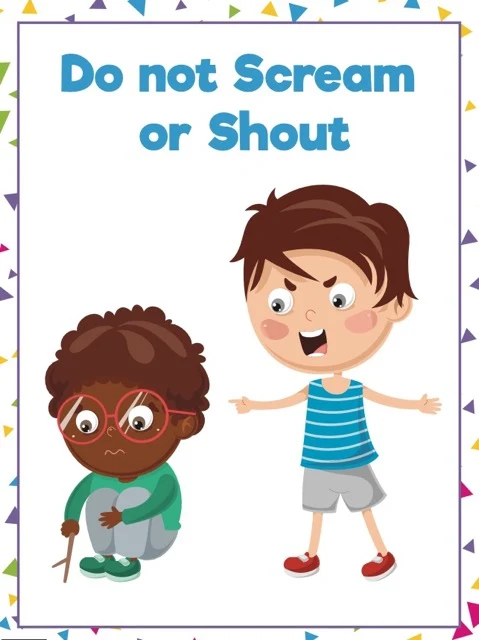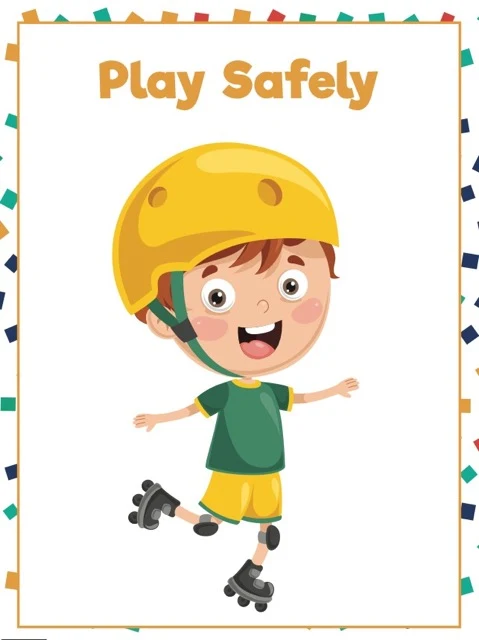Classroom Rules: Respect, Responsibility, Safety
Three sources detail classroom rules and expectations, emphasizing respect, responsibility, and safety as core principles. Source 1 uses a structured question-and-answer format, while Source 2 employs a FAQ approach. Source 3 uses illustrated posters for visual learners. All three sources highlight the importance of these principles for creating a productive learning environment, although their methods of communicating these ideas differ to suit various audiences.
Classroom Rules and Expectations
Briefing Doc: Classroom Rules and Expectations
Main Themes:
●
Respect: Treating others and the classroom environment with consideration.
●
Responsibility: Taking ownership of actions and belongings.
●
Safety: Ensuring a risk-free environment for everyone.
●
Productivity: Maximizing learning time and achieving academic goals.
Key Ideas and Facts:
This briefing document synthesizes information from three sources focused on classroom rules and expectations.
Source 1: "Classroom Conduct and Expectations"
This source takes a structured approach, outlining expectations through various question formats. It emphasizes:
●
Orderly Discussion: Raising hands before speaking ensures respect and prevents interruptions. "Raising your hand before speaking demonstrates respect for the teacher and fellow classmates. It ensures an orderly flow of discussion and prevents interruptions."
●
Permission to Leave: Students must politely request and explain the reason for leaving the classroom.
●
Electronic Device Usage: Devices should be turned off unless permitted for specific activities.
●
Kindness and Respect: Bullying, teasing, or any form of unkind behavior is unacceptable.
●
Shared Responsibility: Students share responsibility for maintaining a clean and organized classroom.
●
Qualities of a Good Student: Being respectful, responsible, and safe are highlighted as key qualities.
●
Safety: Running inside is prohibited due to the risk of accidents.
Source 2: "Classroom Rules and Expectations"
This source adopts a FAQ format, addressing common questions about classroom behavior:
●
Three Pillars of Good Studentship: Respect, responsibility, and safety are reiterated.
●
Attentive Listening: Students should listen attentively when the teacher or classmates are speaking.
●
Walking, Not Running: Emphasizes the importance of walking inside the classroom for safety.
●
Clear Communication: Students must clearly explain their reasons for needing to leave the classroom.
●
Device Policy: The off and away rule for electronic devices is reinforced.
●
Positive Interactions: Treating classmates with kindness and respect is paramount.
●
Classroom Upkeep: Maintaining an organized and tidy classroom is a shared responsibility.
Source 3: "Testing Theme: Classroom Rules.pdf"
This source presents classroom rules visually through illustrated posters:
●
Concise Visuals: The posters reinforce key rules, such as "Be Kind", "Be Safe", "Be Respectful", and "Raise Your Hand".
●
Practical Instructions: Specific behaviors are depicted, like "Walk in the Classroom" and "Sharing is Caring".
●
Focus on Orderliness: Rules like "Line Up Quietly" and "Put Things Away" emphasize an organized and efficient classroom.
Similarities and Differences in Approaches:
●
Similarities: All three sources prioritize respect, responsibility, and safety as foundational principles for a productive learning environment.
●
Differences: Source 1 provides a more academic approach, utilizing various question formats. Source 2 adopts a user-friendly FAQ style. Source 3 utilizes visual aids for clear communication, targeting younger learners.
Conclusion:
These sources collectively paint a clear picture of the essential elements of a well-managed classroom. The emphasis on respect, responsibility, and safety underscores the importance of creating a positive and productive learning space for all. The varied approaches demonstrate how these principles can be communicated effectively to different audiences.
Classroom Rules and Expectations
Classroom Rules FAQ
1. What are the basic rules for being a good student?
Being a good student means being respectful, responsible, and safe. It's important to follow directions and to be kind and helpful to others.
2. How should I behave during class?
During class, you should raise your hand if you want to speak and listen attentively when the teacher or others are talking. Avoid interrupting or talking out of turn.
3. What are the rules about walking in the classroom?
When walking in the classroom, always walk, not run. Be mindful of your surroundings and avoid bumping into others.
4. What should I do if I need to leave the classroom?
If you need to leave the classroom, ask permission from the teacher. Explain the reason for leaving and wait for the teacher's approval before leaving your seat.
5. What is the policy on electronic devices?
Keep your electronic devices, like phones and tablets, turned off and put away unless the teacher gives permission to use them for a specific classroom activity.
6. How should I treat my classmates?
Always treat your classmates with kindness and respect. Be helpful and avoid any form of bullying or unkind behavior.
7. What are the expectations for keeping the classroom tidy?
Keep your belongings organized and help keep the classroom clean by picking up after yourself and putting things back in their designated places.
8. Why are classroom rules important?
Classroom rules are important to ensure a safe, respectful, and productive learning environment for everyone. By following the rules, we create a space where everyone feels comfortable and can focus on learning.
Classroom Conduct and Expectations
Classroom Conduct: A Review
Short Answer Quiz
Instructions: Answer each question in 2-3 sentences.
1.
Why is raising your hand important during class discussions?
2.
Explain the appropriate way to leave the classroom during a lesson.
3.
What are the expectations regarding electronic devices in the classroom?
4.
How should students treat each other, according to the classroom rules?
5.
Describe the role of students in maintaining a clean and organized classroom.
6.
What three key qualities contribute to being a good student?
7.
Why is it important to avoid running inside the classroom?
8.
What should students do with their belongings in the classroom?
9.
What is the primary reason for having classroom rules?
10.
How can following classroom rules benefit the learning environment?
Short Answer Key
1.
Raising your hand before speaking demonstrates respect for the teacher and fellow classmates. It ensures an orderly flow of discussion and prevents interruptions.
2.
If a student needs to leave the classroom, they should politely ask the teacher for permission. They need to explain the reason for leaving and wait for the teacher's approval before getting up.
3.
Electronic devices, like phones and tablets, should be turned off and put away during class unless the teacher specifically permits their use for a lesson activity.
4.
Students are expected to treat each other with kindness and respect. Bullying, teasing, or any form of unkind behavior is unacceptable in the classroom.
5.
Students are responsible for keeping their belongings organized and tidy. They should also actively participate in keeping the classroom clean by picking up after themselves and putting things back where they belong.
6.
The three main qualities of a good student are being respectful, responsible, and safe. These qualities contribute to a positive and productive learning environment.
7.
Running inside the classroom is unsafe as it increases the risk of accidents and injuries. Walking ensures a calm and controlled environment.
8.
Students should keep their belongings organized and in their designated spaces. This helps to maintain a clean and tidy classroom, minimizing distractions.
9.
Classroom rules are essential for creating a safe, respectful, and productive learning environment where everyone feels comfortable and can focus on learning.
10.
Following classroom rules ensures a positive learning environment by minimizing disruptions, promoting respect and collaboration, and maximizing learning time.
Essay Questions
1.
Discuss how respecting classroom rules contributes to a positive learning environment for all students.
2.
Analyze the relationship between individual responsibility and the effectiveness of classroom rules in creating a safe and productive space.
3.
Explain why the ability to follow instructions is a crucial skill for students, both inside and outside of the classroom.
4.
Compare and contrast the classroom rules presented in the two different source materials. How are they similar? How do they differ in their approach?
5.
Imagine you are designing your own ideal classroom. What specific rules would you implement, and why do you believe they are essential for a successful learning environment?
Glossary of Key Terms
●
Respectful: Showing consideration and regard for others, their opinions, and their property.
●
Responsible: Being accountable for one's actions and completing tasks diligently.
●
Safe: Free from danger, risk, or injury.
●
Attentively: Paying close attention with focus and concentration.
●
Permission: Authorization granted to do something.
●
Electronic Devices: Gadgets such as phones, tablets, and laptops.
●
Kindness: Treating others with warmth, compassion, and generosity.
●
Bullying: Aggressive behavior intended to harm or intimidate others.
●
Organized: Arranged in a systematic and efficient way.
●
Designated Places: Specific locations where items belong.
●
Productive: Achieving a significant amount or result.
●
Learning Environment: The physical and social setting where learning takes place.























